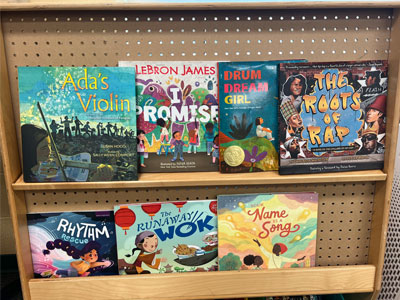For many children, the first place they experience diverse cultures in one location is at school. As a teacher, it is important to me that my classroom be welcoming of all students. Part of that is creating a classroom culture that allows all students to feel important and seen. This can be done by recognizing, celebrating, and building respect for diverse cultures. In a time where responsibilities keep being added to teacher’s plates, how can we also promote cultural awareness within the classroom and our students?
Speaking specifically as an elementary music educator, music and other performing/visual arts are unique to each culture. In the music classroom, I use a diverse repertoire that reflects the unique cultures of my students to teach my curriculum. Although this is an extra step than going to a standard resource, the results more than pay for themselves. From my personal experience, students’ faces light up when we are learning a song from their culture or in a language they speak at home.

Books and Stories. This may be the simplest way to engage students in diverse cultures. Cultural representation in children’s books and stories is becoming increasingly prevalent. The media center or local library would be a great place to locate texts that can be integrated into your classroom. Utilize your classroom library space to showcase books that reflect different cultures and communities.
Model Respect. When introducing a song or activity from a culture or language that is not from an English-speaking country, it is important to model respect. Just because something is different or new does not make it “weird.” Give students questions to support their curiosities (i.e. “I wonder what language this is?” or “I wonder what this song is about?”), and model how to respond without judgment. Then provide context and/or history for each activity so students can build their understanding and appreciation.
Know your students. Throughout the year, we cultivate relationships with our students to build trust and create positive rapport. How can you learn about their cultural backgrounds and incorporate their unique perspectives into your teaching? Have students share their family’s traditions and celebrations with you and their peers to develop understanding.
Recognize and celebrate. A great place to start is cultural awareness/heritage months and holidays. Resources and teaching ideas for these celebrations can typically be found with a quick Google search. When in doubt, look for a resource created by someone from that culture/community. There are great video resources available to introduce traditions to children and educate them on celebrations of diverse cultures.
Defer to the experts. When it comes to recognizing and celebrating our students’ cultures, it is crucial to know that they are the experts. Defer to the student’s experiences and let them lead as the experts in their culture. Cultures are not a monolith and we must recognize that there are diversities within each group. Just as my birthday traditions may differ from yours, so do students who celebrate the same holidays.
Teachers play an important role in modeling and teaching cultural acceptance and educating students about how we can recognize and celebrate our cultural differences. We have the responsibility to educate our students on cultural diversity, but also demonstrate acceptance, respect, understanding, and empathy. All it takes is a small step.

Help support the development and creation of the cultural education curriculum by making a tax-deductible donation.
Make a Donation